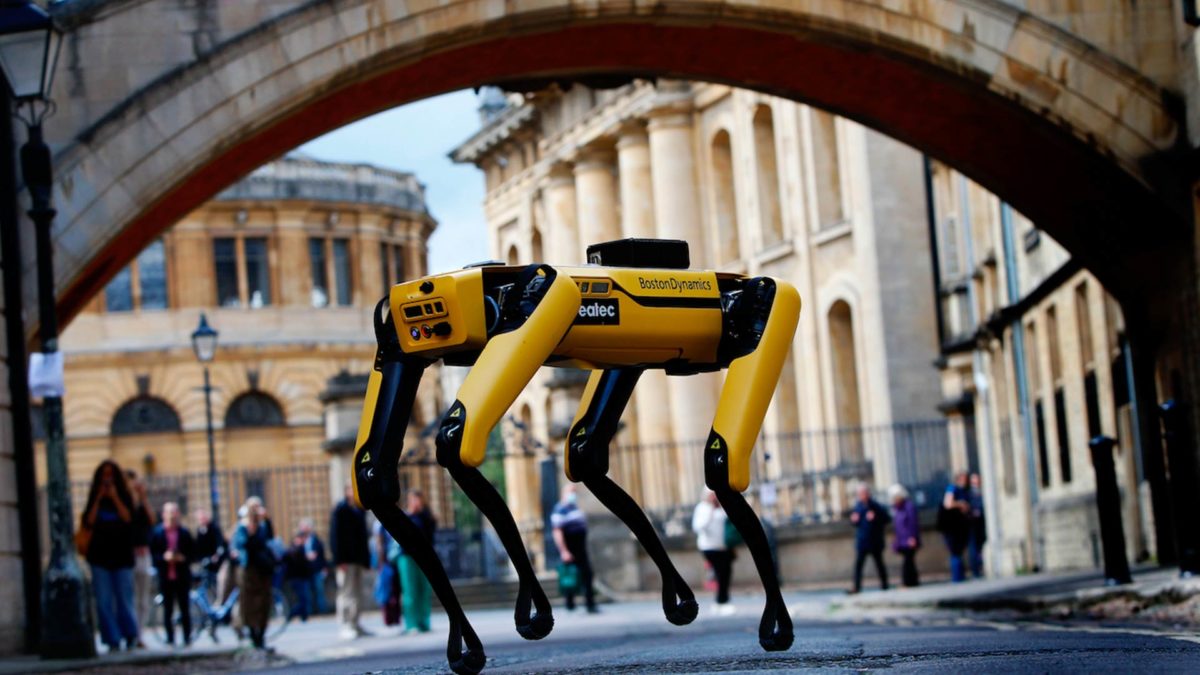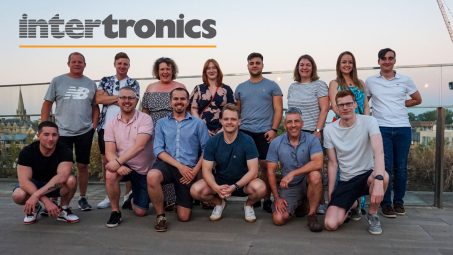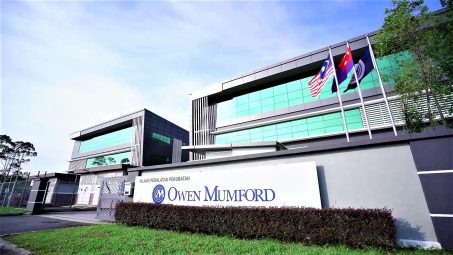
Oxford tech company Createc and the Oxford Robotics Institute design ground-breaking autonomous robot to work in hazardous environments
A team of eight from the Oxford tech company, Createc, and the Oxford Robotic Institute have created an autonomous robotic solution for hazardous environments that removes the need for people to work in dangerous environments, such as nuclear disaster zones.
Based in the Oxford Centre for Innovation, Createc has been developing smart radiation detection and 3D gamma radiation mapping technology over the last few years. Their ‘N-Visage®’ sensor has been deployed worldwide, including at the Fukushima Daichi nuclear power plant in Japan after the devastating earthquake and tsunami in 2011.
The Oxford Robotics Institute (ORI) has developed a state-of-the art, autonomous navigation system called ‘VILENS’ or Visual Inertial Legged Navigation System. The system allows robots to navigate hazardous sites and collate data remotely.
Combined for the first time, the N-Visage®-VILENS system can be installed on all types of robot to solve dangerous work-place challenges and because it processes the data in real time can analyse the situation better than humans.
The advantage of the combined system is that it can be attached to any robot suitable for the particular site under exploration – from a four-wheel drive to a legged robot – and avoids the need for a dedicated robotics development project for each new situation, saving time and cost.
This capability will be invaluable both in decommissioning nuclear sites, where better data leads to cheaper, quicker projects, and in accident response, where rapidly gathering good information is crucial to effective accident management.
Createc’s radiation sensor N-Visage® acts as a “radiation expert” on site by creating a real-time 3D activity map with uncertainty estimates so that dangerous substances or situations can be easily assessed. For instance, the sensor can classify the type of nuclear waste on particular site so that a decision can be made about disposal. Also, ORI’s autonomous exploration software adds capability to any robot using the Robot Operating System (ROS). The combined system can be fitted and set to work in a matter of hours.
Matt Mellor, Chief Executive, Createc said: “The purpose of our smart radiation sensor is that it embodies not only the ability to measure radiation at a known location, but also to automatically interpret that data in the light of a survey objective to demonstrate a proposed next action for the robot to implement.”
“Our aim is to develop a smart sensor that not only has the ability to sense radiation, but also comprises all of the physics knowledge, algorithms and computing power to understand the meaning of the data and advise other system components on how to react to the data.”
“Createc and ORI’s technology will satisfy an emerging need for a robotics module which enables companies to rapidly develop and field robotics systems based on commercial off-the-shelf (COTS) components, confident in their ability to operate in a nuclear environment.”
“We are widely recognised in the nuclear industry for success in innovation and problem solving. Some of our technologies have been deployed around the world to provide accurate, and readily-available, radiological information.”
Dr. Maurice Fallon, Oxford Robotics Institute added: “Our VILENS autonomous navigation technology is a world class tool for robotics. Designed by our team, the local mapping system works in 3D and can operate in all kinds of problematic situations, including completely dark conditions.”
Createc has already demonstrated its credibility for developing and implementing N-Visage® which has been commercially deployed at Sellafield in the UK, and extensively at the Fukushima Daiichi site in Japan. They are working on other sensors which will enable the robots to operate and problem-solve in other dangerous situations, such as gas leaks.
The VILENS was designed by David Wisth, Marco Camurri and Maurice Fallon at the Oxford Robotics Institute. It is a factor-graph based odometry algorithm that fuses multiple sources of measurement. The Institute is well known for running the UK’s first autonomous vehicle on public roads in 2014.
Started in 2010, Createc is based in the Lake District and the Oxford Centre for Innovation. The Centre is owned by local charity The Oxford Trust, set up by Oxford’s first entrepreneurs, Sir Martin and Lady Audrey Wood. The Trust has been supporting start-ups and spinouts for the last 35 years through its two innovation centres, the Oxford Centre for Innovation in central Oxford and its sister site, the Wood Centre for Innovation in Oxford’s Health and Life Sciences District in Headington.
Createc is a channel partner for Boston Dynamics enabling distribution of their Spot robot to UK buyers.
The Oxford Robotics Institute (ORI) is an interdisciplinary division within the University of Oxford’s Department of Engineering Science.
More in Manufacturing

Intertronics: Driving Innovation in Adhesives and Assembly Solutions
For over four decades, Intertronics has been at the forefront of providing high-performance adhesives, coatings, sealants, and application equipment to industries that demand precision and reliability. From electronics and medical devices to automotive and aerospace, Intertronics’ expertise ensures that manufacturers can optimise their bonding and assembly processes with cutting-edge solutions.

Unipart named CCS supplier
Unipart has been named as a supplier on Crown Commercial Service’s (CCS) Logistics, Warehousing and Supply Chain Solutions (RM6329) framework agreement.

Owen Mumford: 70 Years of Innovation in Healthcare
Owen Mumford has been at the forefront of medical device innovation for over 70 years, pioneering solutions that enhance patient care and improve healthcare outcomes worldwide. Established in 1952 by Ivan Owen and John Mumford, the company has grown into a global leader in medical device design and manufacturing, with a commitment to quality, sustainability, and patient-centred innovation.
From this author

Pioneering electric flight motor manufacturer soars into Bicester and Albion Land...
Evolito, the company behind the world’s most advanced urban air mobility motors, has taken the first three units for its new HQ at Catalyst Bicester, the new under construction, £100 million advanced manufacturing and technology business community in Bicester, Oxfordshire.

